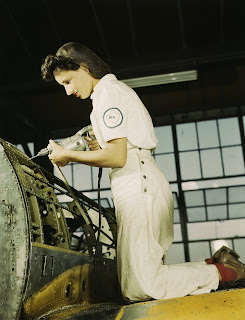(Interview plays after short advertisement)
On NBC Nightly News, on Tuesday, October 30, 2012, in a flooded underground train station, anchor Brian Williams was shown interviewing New York Governor Andrew Cuomo. Williams states (30 seconds into the video): "So, let's talk infrastructure governor. Short of a WPA, short of a Rooseveltian undertaking to rebuild our cities, how do we rebuild our cities, because we can't have this?"
The rest of the interview highlights the notion that natural disasters, like Hurricane Sandy, are likely to become more frequent due to climate change. It seems to me that now is a great time to institute a new and permanent WPA to help prepare for natural disasters, help clean up after natural disasters, and help those affected by natural disasters...just like the old WPA did. Why not give the long-term unemployed meaningful and important work opportunities in this age of job outsourcing and high un- and under-employment?


















